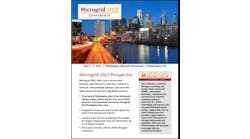By Elisa Wood
July 16, 2009
The Washington Times ran a commentary July 11 that took a swipe at compact fluorescent lights. Titled “Light-bulb liars,” the article warns that broken CFLs are an “environment disaster in your family room” that “could poison the dog, the kid and the wall-to-wall rug.”
To underscore the gravity of CFL dangers, the article then takes us through the Environmental Protection Agency’s step-by-step mercury clean-up advice. http://www.washingtontimes.com/news/2009/jul/11/light-bulb-liars/?feat=article_top10_read&page=2
Here are a few things the article fails to say about CFLs, that enerystar.gov points out.
*True, they contain mercury, but a very small amount. They average 4 milligrams, compared with 500 milligrams in the old mercury-based thermometers, an amount equal to 125 CFLs.
*Advancements in CFL technology are reducing their mercury content. Some have mercury content as low as 1.4 to 2.5 milligrams.
*Coal-fired electric plants create a heck of a lot more mercury. CFLs are more efficient than conventional light-bulbs. So when we use CFLs we use less electricity, meaning grid operators and utilities can fire up coal-fired generators less frequently. If all of the CFLS sold in 2007 ended up in a landfill, they would deposit 0.16 metric tons of mercury. In contrast, coal plants emit 104 metric tons of mercury annually.
The article also points out that CFLs are more expensive than conventional incandescent lights, but fails to say that they continue to operate far longer.
After I finished reading the Washington Times commentary, my eyes went back up to the title: “Light-bulb Liars.” Now the Times wasn’t referring to itself, was it? Okay, to say the paper lied might be a little harsh, but the article certainly engaged in hyperbole and sins of omission.
Visit Elisa Wood at www.realenergywriters.com and pick up her free Energy Efficiency Markets podcast and newsletter.





